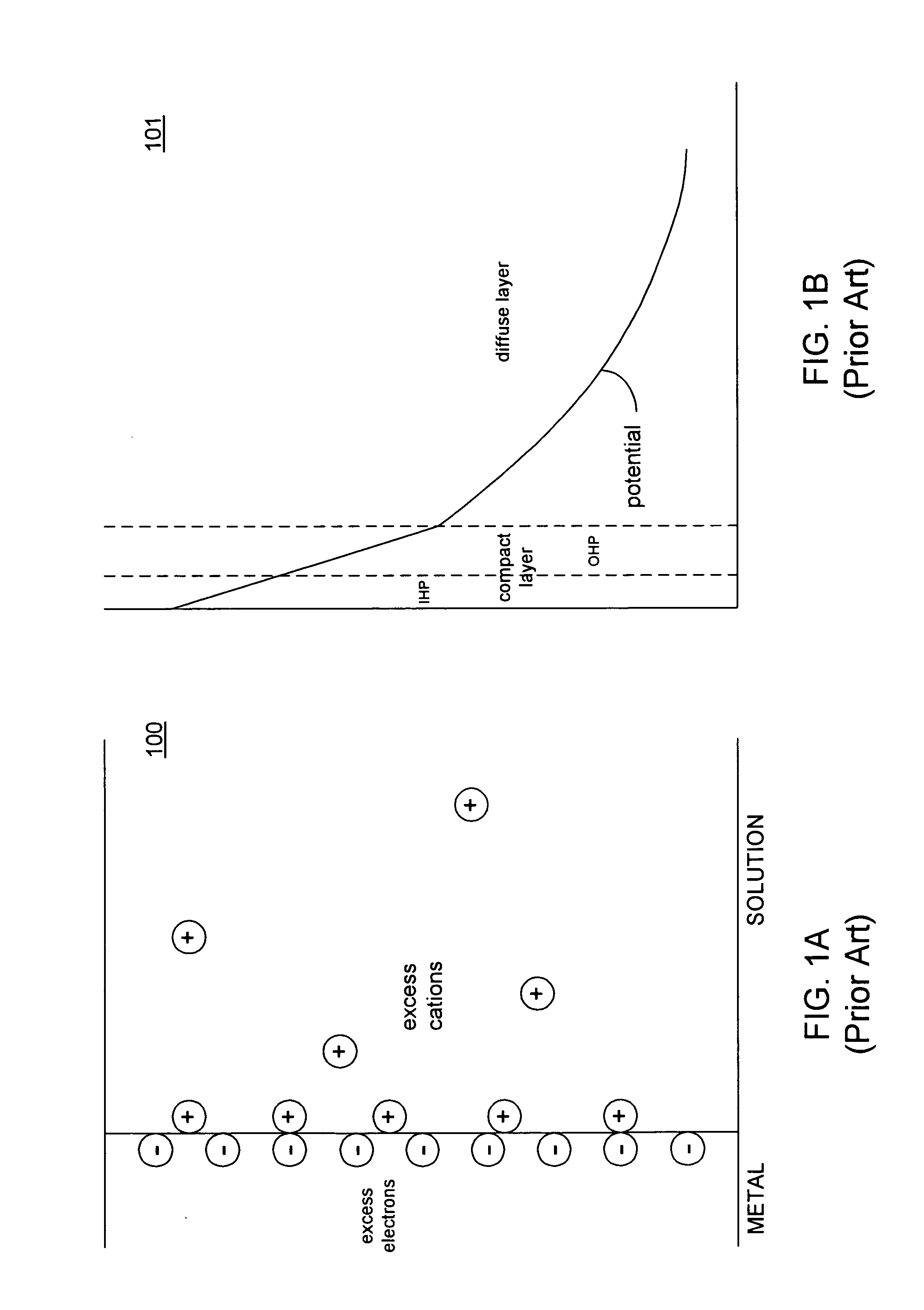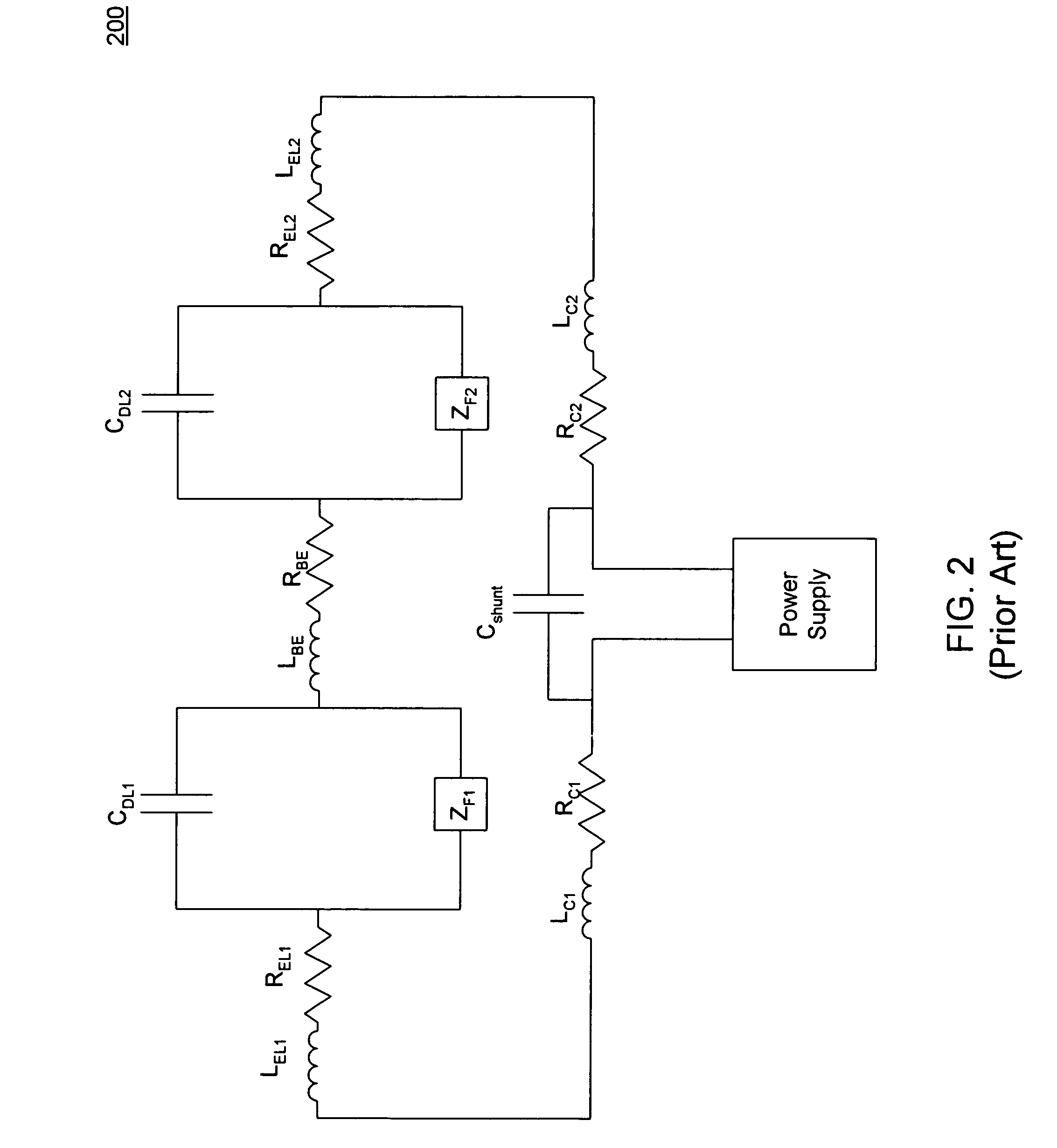System for interphase control at an electrode/electrolyte boundary
a technology of interphase control and electrode, applied in the field of electrolytic cells, can solve the problems of nelson not addressing the inductance of the electrochemical cell itself, the inability of prior art apparatus to provide precise manipulation of the interphase, and the inability to manufactur
- Summary
- Abstract
- Description
- Claims
- Application Information
AI Technical Summary
Benefits of technology
Problems solved by technology
Method used
Image
Examples
Embodiment Construction
[0083]FIG. 3 shows a block diagram 300 of an embodiment of an electrolytic cell interphase control system. A bus 311 couples a control module 310 to a waveform generator 315. The control module 310 transmits signals to the waveform generator 315 that set the parameters of an output waveform (e.g., duty cycle, amplitude, and period). The bus 311 may also provide feedback to the control module 310 with respect to the output of the waveform generator 315. The output waveform of the waveform generator 315 may include a unipolar signal that has a positive excursion referenced to ground and / or a bipolar signal with positive and negative excursions.
[0084]The waveform generator 315 is coupled to a driver 320 by a signal bus 312. The bus 312 may couple two nodes and carry a single waveform as the output of the waveform generator 315, or it may carry a number of distinct signals between more than two nodes. In a preferred embodiment the driver 320 is driven by an input signal in the range of ...
PUM
| Property | Measurement | Unit |
|---|---|---|
| Debye length | aaaaa | aaaaa |
| temperature | aaaaa | aaaaa |
| relative dielectric constant | aaaaa | aaaaa |
Abstract
Description
Claims
Application Information
 Login to View More
Login to View More - R&D
- Intellectual Property
- Life Sciences
- Materials
- Tech Scout
- Unparalleled Data Quality
- Higher Quality Content
- 60% Fewer Hallucinations
Browse by: Latest US Patents, China's latest patents, Technical Efficacy Thesaurus, Application Domain, Technology Topic, Popular Technical Reports.
© 2025 PatSnap. All rights reserved.Legal|Privacy policy|Modern Slavery Act Transparency Statement|Sitemap|About US| Contact US: help@patsnap.com



